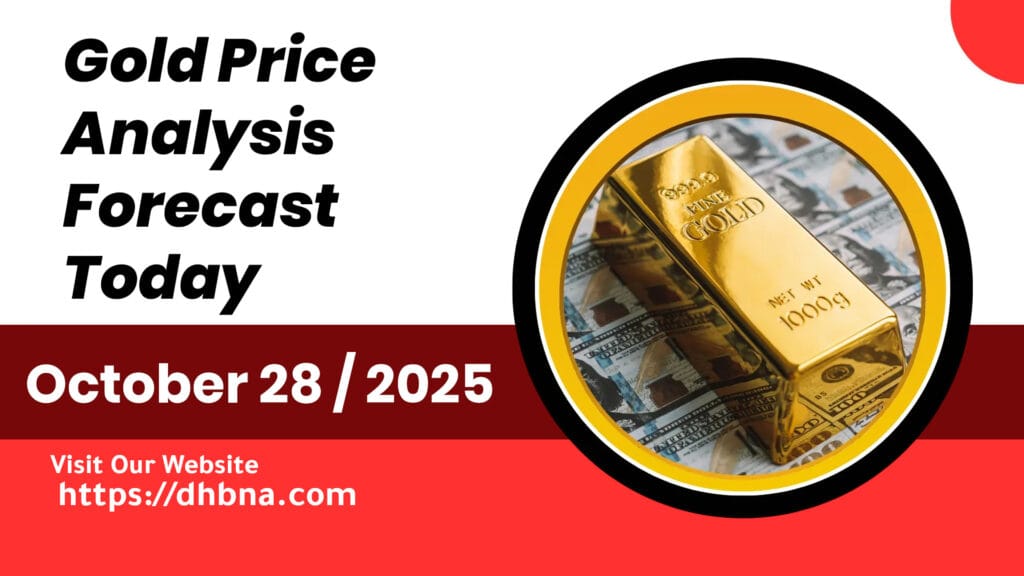Gold is the bridge connecting the present to the economic future.
The gold market has seen a significant rally this year, driven by a combination of geopolitical tensions, a weakening U.S. dollar, and expectations for interest-rate cuts by the Federal Reserve under Jerome Powell. Recently the price surpassed US $4,000 per ounce according to the Gold Council, then tightened near US $3,900 – reflecting strong momentum but also evident risk of correction. A Reuters poll also showed that market participants expect further cuts from the Fed, reinforcing gold’s appeal as a safety asset.
In this context, we present a structured analysis targeted at investors and commodity watchers based on the DHBNA methodology, dividing our commentary into three analytical pillars, a brief technical section, future outlook and a neutral summary.
Global News and Indicators
- Geopolitical/global risk: Renewed U.S. threats regarding tariffs on China and broader policy uncertainty among major economies help boost safe-haven demand for gold.
- Safe-haven and sentiment indicators: Strong inflows into gold as investors diversify away from the U.S. dollar and traditional bond-stock allocations; for instance, the bank HSBC pointed to weakening dollar and rising sovereign deficits as supportive.
- Risk-event triggers: A notable sharp one-day drop on 22 October underscored the heightened volatility and sensitivity to macro data.
Together, these signals suggest global news is broadly positive for gold’s appeal, though the environment remains volatile and corrections are plausible.
Commodity and FX Markets
- U.S. dollar & Treasury yields: A weaker dollar boosts gold’s dollar-denominated value; conversely, higher bond yields reduce humanity’s attraction to non-yielding gold. The recent decline in gold accompanied dollar strength and yield considerations.
- Other commodities – oil, silver: The pull-back in silver and pressure on commodity markets more broadly reflect that the metals complex is under strain. Silver’s drop was steeper, indicating broad commodity risk. Lower oil/industrial demand could diminish some of the upside tailwinds for gold linked to inflation expectations.
- Inter-commodity dynamics & technical cues: According to Economies.com, the negative pressure on gold trading below its 50-day moving average suggests a technical element from the broader commodities framework.
Hence, gold’s performance is intertwined with currency, commodity and yield dynamics, supportive overall but facing headwinds if yields rise or commodity sentiment weakens further.
Central Bank Actions and Monetary Policy
- Federal Reserve policy expectations: A Reuters poll found that a majority of economists expect the Fed to cut rates to 3.75-4.00% in its October meeting, with another cut likely in December. Rate cuts reduce the opportunity cost of holding gold and enhance its attraction.
- Analyst forecasts and institutional views: JPMorgan sees an average gold price of US $5,055 per ounce by Q4 2026, based on central-bank and institutional demand assumptions. Similarly, HSBC revised its 2026 average target to US $3,950 per ounce citing ongoing official-sector buying.
- Official sector purchases and demand: As per research from Goldman Sachs, central-bank gold accumulation and institutional investor shifts contribute to the foundation of the current rally, not speculative excess.
Therefore, monetary-policy and central-bank dynamics provide a strong structural backdrop for gold, albeit conditional on actual policy moves and demand continuation.
Technical Analysis (Brief)
- Support level: ~ US $3,865 – 3,935 per ounce, with some models pointing to a test near 3,935 US $ in the near term.
- Resistance level: Around US $4,100 – 4,150 per ounce – previously tested near US $4,130.
- Short-term trend: In a corrective phase, following a strong prior run.
- Medium-term trend: Upward bias remains intact, unless broken support leads to a deeper correction.
Future Outlook
- Short-term (days-weeks): Expect consolidation in the US $3,900-4,100 range, with a potential drift toward support unless fresh positive data or policy cues emerge.
- Medium-term (several months to end of 2026): If the Fed proceeds with rate cuts and central-bank demand remains intact, gold could resume an upward path, potentially targeting the US $4,500-5,000 zone as suggested by major banks. If instead policy tightening occurs or demand weakens, the metal might revisit lower support levels.
- Key risk factors: Unanticipated hawkish policy from the Fed, a stronger dollar, subdued demand from the official sector, or a broad commodity meltdown.
Summary
In summary, at the price of ~US $3,926.53 per ounce on 28 October 2025, gold is supported by strong macro and policy fundamentals but faces the possibility of near-term consolidation or correction. The structural backdrop of safe-haven demand, central-bank purchases and potential rate cuts remains intact; however, the environment is not without variability. Investors should note that while the medium-term upward case remains valid, the short-term path may include sideways or downward pressure. No direct investment recommendations are offered here, rather, this analysis is intended to help form a balanced view of gold’s current positioning and potential trajectory.
Discover more from Dhbna
Subscribe to get the latest posts sent to your email.

